One of the first cars we were offered a look at when we started reaching out to manufacturers about Android Auto in 2015 was a Škoda Fabia. At the time, we weren’t able to take them up on their offer, but in 2016 the Fabia has been re-released with even more new features, and after reviewing a couple of trucks, I thought it was time to take a look at a different segment of the auto market.
Škoda describes the Fabia as the perfect car for those looking to make a statement. The striking design of the Monte Carlo model is highlighted with its black design elements, including the 17” Savio black alloy wheels, a large panoramic sunroof, front grille and door mirrors. It also offers a stylish interior, featuring Monte Carlo design sports seats, and plenty of room for passengers and their luggage.
At the end of the day, that description is about right. While it’s a small car — very small, in some respects — the Fabia is quite a lot of car for the price. With a driveaway price of just $26,490, the Fabia comfortably seats four in sporty, yet comfortable seats, and provides technology that many other cars in this price range simply don’t offer. Hell, the Fabia has technology that some of the vehicles I’ve reviewed previously don’t have, and they were closer to the $60,000 mark.
While it won’t be the car for everyone — it’s going to be too small for the tall amongst us, and if you’ve got kids, especially older kids, they just won’t fit — as a car for getting around town in style, comfort, and using as little fuel as possible, the Fabia is a great ride.
Škoda Fabia Wagon Under the hood
Let me start this by saying there’s not a lot under the hood. Škoda’s Fabia has a tiny 1.2L 4-cyl engine, and with the help of a turbocharger, it puts out a maximum of 81kW power. That’s not an awful lot, and you will certainly feel the difference coming from a car with a larger displacement.
With that engine, the Fabia has to move around a tonne of car, plus however much human you put inside. I drove the Fabia solo, and with another adult and two kids in the back, with a stroller in the boot, and honestly didn’t feel a significant difference in performance. Yes, the Fabia was a little quicker off the block without the extra three people on board, but not significantly.
The Fabia’s compact engine is paired with a 7-speed DSG automatic gearbox, which stands for Direct Shift Gearbox. For those not familiar with these, the DSG gearbox is basically two gearboxes in one, with a dual-clutch design, that means you’ve got seven real gears (not a torque converter), and fairly smooth, seamless gear transitions. You can — as with most autos these days — drive it in a pseudo manual mode, which does feel a bit more responsive than the standard auto-as-a-manual.
The DSG isn’t all fun though; being an automated manual gearbox (my terminology, not Škoda’s) the Fabia can be a little slow off the line while it shifts from neutral into gear, but once it’s in gear, you barely feel the changes and the Fabia will smoothly move through the full gears to drop you into 6th or 7th gear before you reach a cruise speed of 70kph or so.
You might think it a little odd that the car — or that any car — would use 7th gear in city driving, but it doesn’t do too badly. This delivers a great deal of fuel economy, while still leaving the car responsive enough to pick up and go when needed. There are two driving profiles — Drive and Sport — and we’d recommend using a combination of the two. Drive is great for getting around in a leisurely fashion, but if you’re needing to move away quickly, or if you’re after a longer lingering in the lower gears, you’ll want the Sport mode.
Škoda Fabia Wagon Technology
For a small car under $30k, you could be forgiven for not expecting to find a great deal of technology in Škoda’s Fabia, but you would be mistaken.
For starters, there’s Android Auto and Apple CarPlay, but we’ll talk about that a bit more below. Let’s run through some of the features we were impressed with:
- For starters, there’s full Digital Radio (DAB+), in addition to the usual AM/FM tuner. This means you can chill out driving along to Buddha radio, or get your groove on with Sydney’s Gorilla dance hits. For a car with no visible external aerial, radio reception is strong in most areas around Sydney.
- Adaptive Cruise Control means you can set an ideal speed (e.g. 110kph on the freeway), and the Fabia will happily move along at that speed until it finds another car, and then it will sit a safe distance off the car in front, matching their speed but never exceeding the pre-set limit or minimum distance. The feature is also useful in slow traffic, where it will keep the Fabia moving and safely positioned, even bringing the car to a complete stop if the car in front stops. Many other cars with ACC disconnect the cruise control below a certain speed, meaning you need to be paying a lot more attention.
- Keyless Entry and Start System (which Škoda calls KESSY) means you can mostly leave your keys in your pocket or in your handbag and basically forget about them. As long as you’ve got the keys on you, you can tap the front door handles to unlock the car, and then tap the button on the steering column to start/stop the car. Pretty much the only time you’ll need the key fob is to lock the car when walking away (there’s no auto/proximity lock feature). Keyless entry works on the boot too, which is a welcome bonus.
Sadly, while these features are awesome and were included in our review vehicle, these aren’t standard on the Fabia Monte Carlo (or indeed any of the Fabia range); they’re included as part of a ‘tech pack’, which at an additional $1,800 includes those and the following features:
- Advanced keyless entry incl. smart start (KESSY) & Alarm
- Rear parking sensors
- Adaptive cruise control (upgrade from cruise control)
- Climatronic air-conditioning
- Light Assist and Rain Sensing Wipers
- Fatigue detection
- DAB+ (digital audio broadcasting)
- Auto-dimming rear view mirror
I’m going to say that if you’re going to spend $26k on the Fabia Monte Carlo wagon, you’re going to want to spend that extra $1,800 to get all this. Without it, the Fabia feels overpriced, and with it, it feels just right. My only thought is that they should really be included in the base.
Even with the tech pack, though, there’s things that perhaps I’ve grown accustomed to of late that the Fabia doesn’t have. Things like lane-keeping or warning are notably absent, and I feel that the Fabia would be much the better for having them. Being such a small car, with light steering, it can wobble a bit at higher freeway speeds, and lane-keeping would be welcome assistance.
Self-parking would be neat too, but the Fabia is so compact and easy to steer that parking it really isn’t difficult. If you can’t park the Fabia, you probably shouldn’t be driving anyway.
Škoda Fabia Wagon Android Auto
Like Android Wear, Android Auto is an adjunct to Google’s Android operating system, in that it relies on you having an Android mobile phone to make it work. Also like Wear, the experience of Android Auto is almost always going to be the same regardless of what car you use it in. Android Auto in the Škoda Fabia is the same as Android Auto in just about any other car.
Škoda’s implementation is well integrated, and probably amongst the best I’ve seen. The only way it could be improved is to have a physical button to launch Android Auto, instead of requiring a few taps on the touchscreen to launch it.
The Fabia’s entertainment system is a 6.5-inch touch-screen display which is suitably bright during daylight, and yet muted at night; it never felt too bright, or too hard to see. At 6.5-inch, it’s a little smaller than some other units (which fits with the Fabia being a small car, and having limited space to put giant screens), but I never felt that it was too small; in fact, quite the opposite, I prefer a slightly smaller screen like this than an 8-inch monster in some other cars.
Having two dials — one for volume, one for menu — means the Škoda can do the same party trick as Holden’s Android Auto. Turning the menu knob in the head-unit’s default system navigates through menu items, radio stations, etc, and in Android Auto it does the same, giving you a finer level of control than using a touchscreen while driving. As an added bonus, while in Google Maps this menu dial zooms in and out, to make finding the right street or property address a lot easier.
As with other Android Auto head units, USB cables really matter. If you use a crap cable, you can expect a correspondingly crap Android Auto experience, with freezing, drop-outs and worse. You don’t want to be fiddling with your phone and cable while you’re driving; it’s downright dangerous.
With a third-party cable, you may experience difficulties, but at least in Škoda’s case, we didn’t come across any. The issues seem to be far more prevalent on Holden and Ford units that we’ve tried.
Android Auto, for those who aren’t aware, has some fairly standard features:
- Google Maps for navigation, traffic and route planning. It works just as well as Google Maps on your phone, except it’s on display in your car and with an easy-to-use driving interface.
- Google Play Music, and other compatible music apps. Again, very easy to use, though sometimes you may find you have to stop driving to access the more advanced features (GPM especially will prompt you to stop driving to access playlists, for example).
- Making/receiving phone calls, either from your contacts list, or you can tell it what numbers to dial
- Notifications from SMS or Telegram, amongst others, which Android Auto will read out to you.
- Google’s voice control, which basically gives you access to the same features as ‘OK Google’, though not every single one. It’s very powerful, with commands like ‘Navigate home’, ‘What’s the weather like today’, ‘How long till I arrive’ and ‘Dial 131700’ all working very well.
Škoda Fabia Wagon As a Car
There are very few small wagons still on the market in Australia, and it’s a segment that probably doesn’t see a lot of demand. However, there is a place for it. The Fabia as a wagon is undeniably a small family car where a hatch just probably wouldn’t do, where a sedan wouldn’t give enough flexibility, and anything larger (e.g. a mid- or full-sized wagon or SUV) would be too much.
For the average Australian family with 2.3 kids, the Fabia might be just a touch too small. We comfortably fit our two kids without much drama — a newborn in her capsule, and Flynn in his car seat — but there’d be next to no room in the middle for a third, for example when my eldest comes to visit. Equally, if your kids are much older, you might find they fit slightly better; with car seats, the available space reduces quite a bit, but if your kids are sitting on the Fabia’s seats (i.e. without a booster or car seat) you’ll find they’ll probably be quite comfortable. Forget about putting adults in the back, though, there’s just not enough space.
Despite the small 1.2L engine, the turbocharger absolutely made up for any deficits, and I found the Fabia’s performance more than adequate for just about every circumstance. Of course, being in a Monte Carlo configuration, the addition of a front splitter and other body accessories removed some of the ground clearance, but this car is low to the ground anyway; you really can’t expect it to be too capable here.
I found the Fabia extremely enjoyable to drive around town and on the open road (noting that, on freeways at least, it does wobble a little more than I might otherwise like). The in-car technology makes the car very easy and pleasant to drive, with a decent quality audio system for in-car entertainment, comfortable seats and fittings and plenty (and I do mean plenty) of room in the boot to store whatever you need to take. I had no difficulty fitting a stroller and a full load of groceries in the boot, something I’ve struggled to do in a good number of other cars, including medium SUVs.
One thing in-car that let the Fabia down a little bit was the air conditioner; on a hot day, it just didn’t have enough power to cool the car down, and I think there’s two reasons for this. First, the air conditioner simply isn’t very powerful. It was capable of producing cool air, but it couldn’t push it out very effectively. Equally, the location and angles of the vents just didn’t feel capable of producing a nice cooling feel for those in the front, without even looking at those in the back.
The other factor which didn’t help with managing the heat was the sun roof. The Monte Carlo comes with a glass sun-roof (it doesn’t open) which you can close by pulling two blinds across it from the front and back. The problem is these blinds don’t totally block the sunlight coming in, which lets an awful lot of heat in through the roof. This really hampers the car’s ability to cool itself, meaning that on hot days, the Fabia really just doesn’t cool down as much as it should. In the Australian climate, particularly in New South Wales and those areas further north, the Fabia will almost certainly get uncomfortably warm.
Škoda Fabia Wagon Conclusion
If you can put that aside, the Fabia is a great little car, and it’s very affordable. As a hatch I suspect it’s somewhat unremarkable, as the hatch market is very capably served, but as a small wagon, it shines, because there’s far fewer options around. The technology mix is extremely good (especially for this price point), and as a car, the Fabia is more than capable.
Our review vehicle has an on-road price (at new) of $27,990, however if you want to save about $7,000, you can forgo the Monte Carlo additions and get the same drivetrain underneath. Basically for that extra $7,000 you get adaptive cruise control, glass sun-roof, climate control air conditioning, keyless start and entry, and a few other odds and ends. You might or might not see the value in this, but it really does take the Fabia Wagon from being about standard for the price to being rather exceptional for the price.
Would I buy one? If I didn’t have kids, or had only one (and wasn’t planning on having more) the Fabia Wagon would be a great buy, so yes, I would.

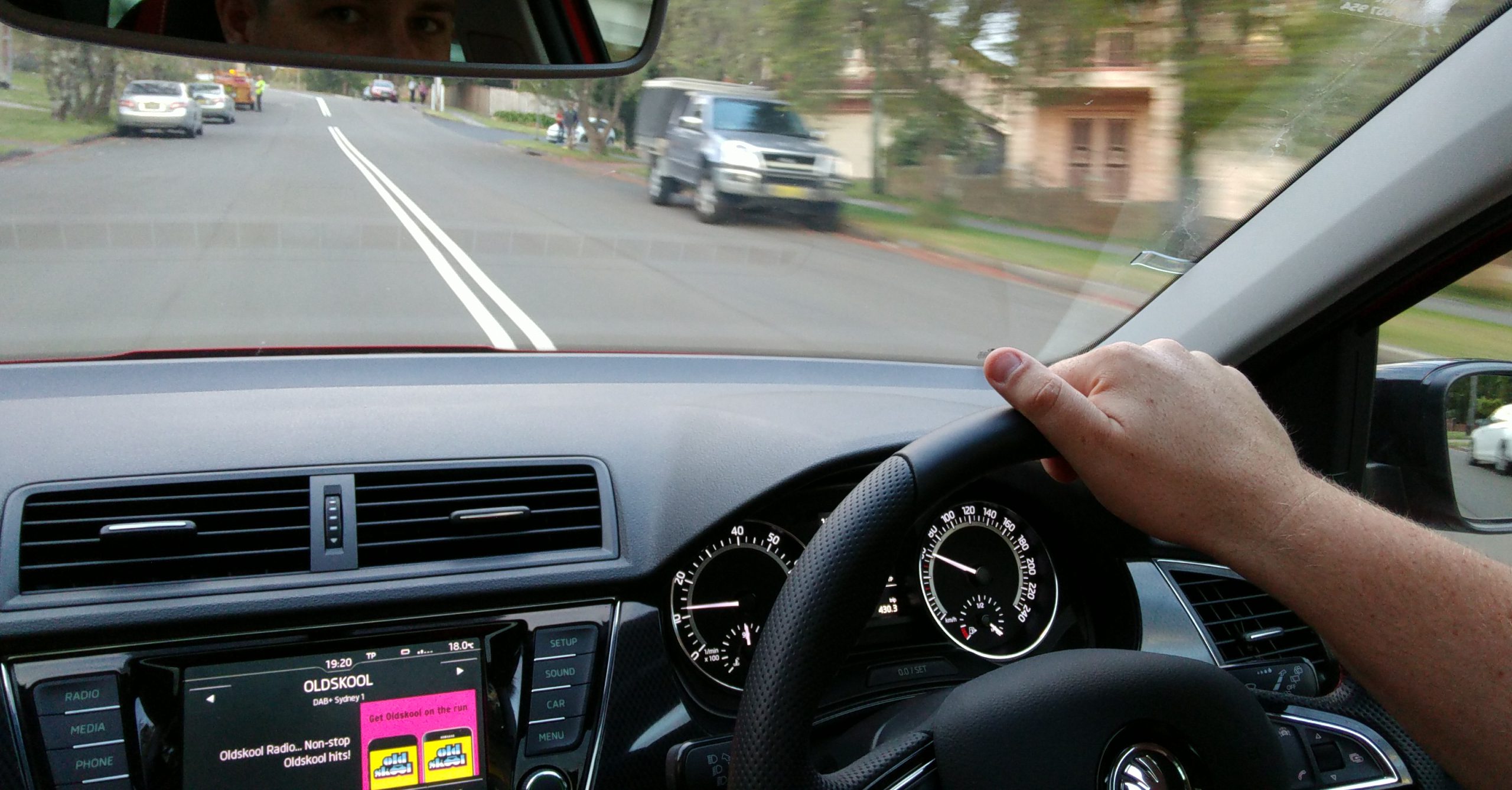
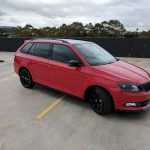
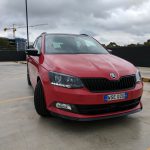
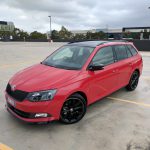
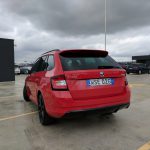
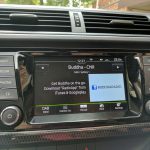
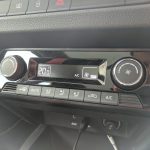

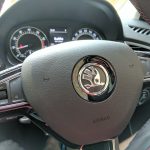
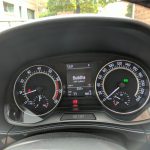



Great article, Chris. I’m looking at getting the Skoda Scout next year so if they offer you the opportunity to test drive it, let us know what you think.
I would -love- to get my hands on a Scout. A European version of the Subaru Outback is basically what I’ve heard, and that’s a glowing endorsement.
I had an Octavia RS as a family wagon. It was absolutely perfect for its role.
I’m a big fan of the Skodas. Take a VW, make it look heaps nicer inside and out then sell it for less. Win, win, win.
It’s good to see Android Auto in there because the standard VW RNS-510 Columbus system was just absolute garbage. Slow to start up, unresponsive to touch, and not very intuitive.
Well said Max. The Octavia range is brilliant, and I’m looking to take one for a spin in a couple of weeks. Hopefully an RS wagon like you’ve had. A beautiful looking car, full to the brim of tech, it’s just wonderful.
This Fabia (despite the somewhat funny name) has more bells and whistles in it than cars twice its price. If it had lane keeping, it’d be an absolute steal.
Hey Max, are you talking about the 8″ Columbus system that is currently available in some Skoda models? It’s offered as part of the premium package for the Skoda Scout so I’m wondering in your view if it’s worth it assuming it’s the same model.
I’m not sure about the current models. Mine was an MY10 so it’s been a while since I’ve paid attention
It was the 8″ system, though. It was rubbish. Not worth it at all.
Thanks for the reply and yep, I’m talking about in the current MY17 models. I’ll see if I can find some reviews on it.
As I understand it — though I need to confirm it — the current entertainment system range across the current models is very similar to what we used in the Fabia; obviously the Columbus model has more features (incl. built in nav) than the Fabia’s head unit has, but the platform is the same.
Definitely wouldn’t describe it as rubbish. It’s probably one of the better head unit systems I’ve used.
No mention of how good the screen is. Is it capacitive touch? How bgright does it get in nits? What’s the resolution?
I expect more from a technology website.
Dude, it’s an in-car entertainment system, not a 60-inch 4K TV. No one cares how many nits it has, and its resolution (for Android Auto purposes) is irrelevant – Android Auto looks and functions the same on every head unit that exists. That’s the whole point.
As for the size and how good it is? It’s in the article. I guess you didn’t read it.